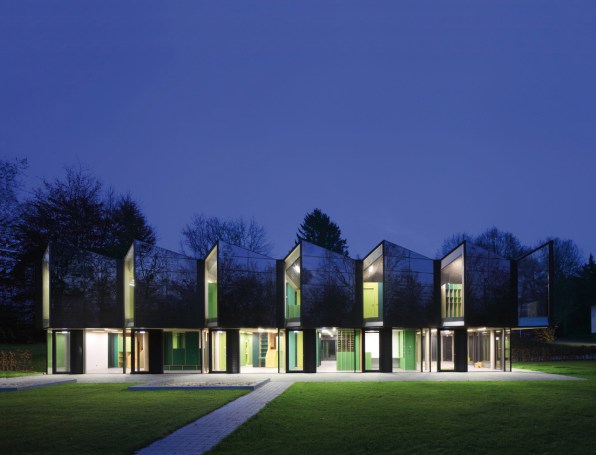Modern residential house designs take a cue from indoor-outdoor spaces that help ventilate the home and create better connections with the environment. Natural light is more prioritised than earlier and thus the necessity of shade comes with, that is both practical and architecturally aesthetic.

Outdoor Shading Solutions:
A Vergola is a good example of this as it lets more sunlight in. Pergolas are operable louvres, this is one of the best options for outdoor shading because if its flexibility of acting as a full shade in rainy or overly bright weather conditions. These homes shading solutions bring in some light and ventilation when the weather is pleasant. Such roofing solution features louvres with a unique aero-foil wind shape that incorporated an air gap.
Pergolas and Vergolas are suitable for front or back yard of a detached or semi-attached home, or even the rooftop of a multi-residential building. One such example is Opening Roof, that can be used to make a bold architectural statement. In this case, not only the louvres have the ability to open and close overhead, but they are also able to retract and stack back to less than 20 per cent of their opening space.
Openable roofs can be used in situations where we don’t want all force of sun at all times but at some time of the day like evening, nights or early mornings to enjoy the sky above.
Indoor Shading Solutions:
Inside a house, shutters are a good alternative for shade and insulation. With up to 40 per cent of home’s heating lost and 87 per cent of heat gained through windows, shutters can be a solution to regulate the internal temperature, improving comfort and lowering of overall energy use. Timber shutters have strong insulation qualities, with R-values between 2.77 and 3.17 and this is certainly superior to alternate materials like aluminium or plastic.
Another good window shading solution is SilverScreen Performance window covering, that reflect up to 85 per cent of solar radiation. Incorporating a microscopic layer of aluminium onto fabric, it’s possible to reflect heat and glare outside the building and regulate the heat and light indoors, while still retaining views to the outside.
The architectural design features glass walls on every level, capturing sweeping bay and bushland views. These expansive glass walls look aesthetically pleasing, and they can have adverse effects on the interior for excess heat and fabric fading from UV radiation.
Examples Proving that Sun can be Beautiful:
- The Blauhaus, Niederrheim University: From the outside, Blauhaus looks like it is composed of solely blue glass, but by closer inspection, reveals it’s a tessellation of windows and solar panels, that can be rotated to follow the sun.

- The Science Pyramid, Denver Botanic Gardens: With a jagged shape inspired by the tectonic shifts that formed rocky mountains, the Science Pyramid is clad in gray hexagonal tile and solar panels that blend in with the pattern.

- Standford University Central Energy Facility: The structure is elegantly obscured heavy-duty infrastructure with metal screens- and a shade trellis is actually a solar array that powers the entire building.

- Nursery + E: The facade has solar panels integrated directly into the surface such that the angular facade helps the panels to receive the most sun exposure.








